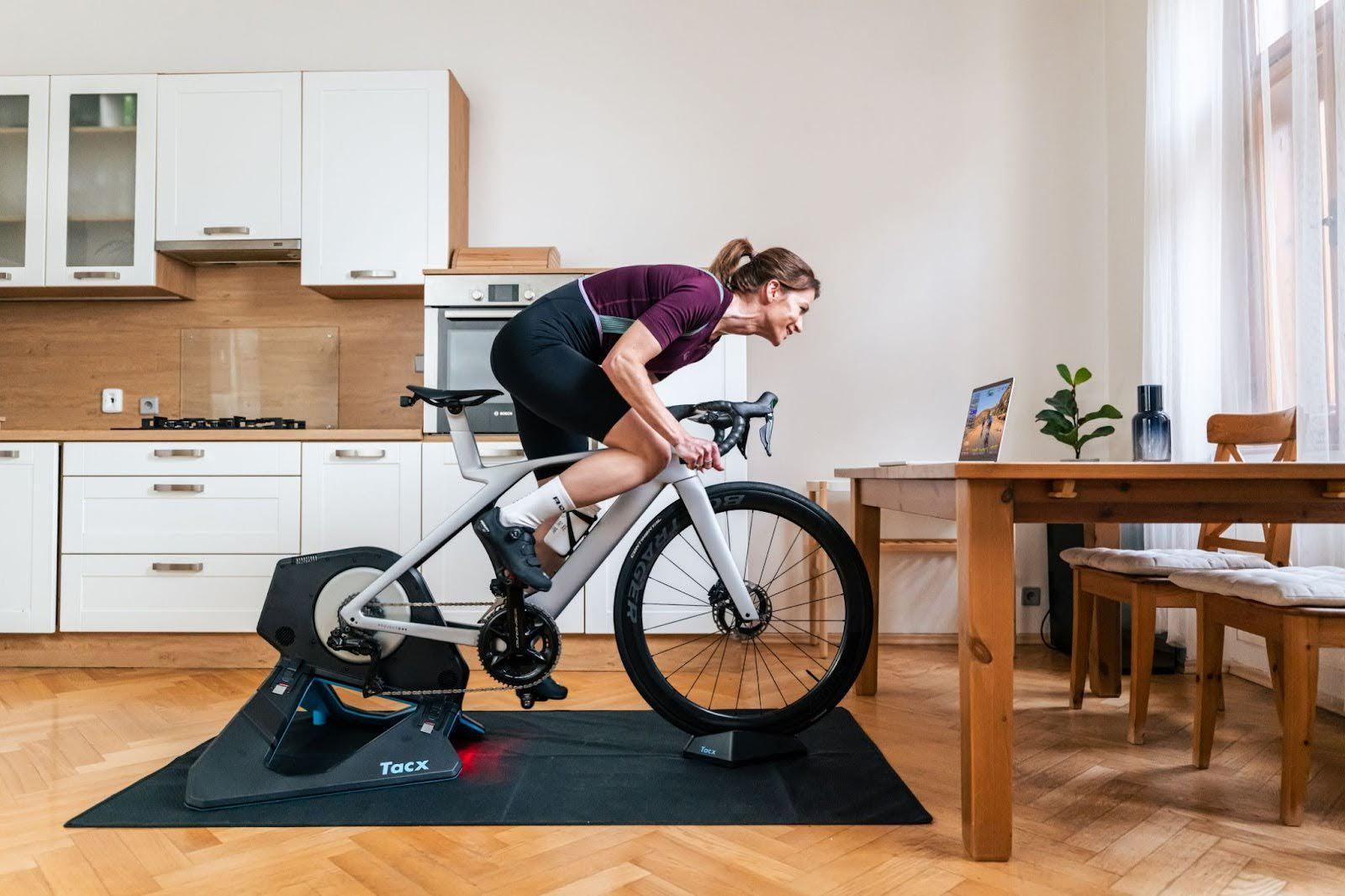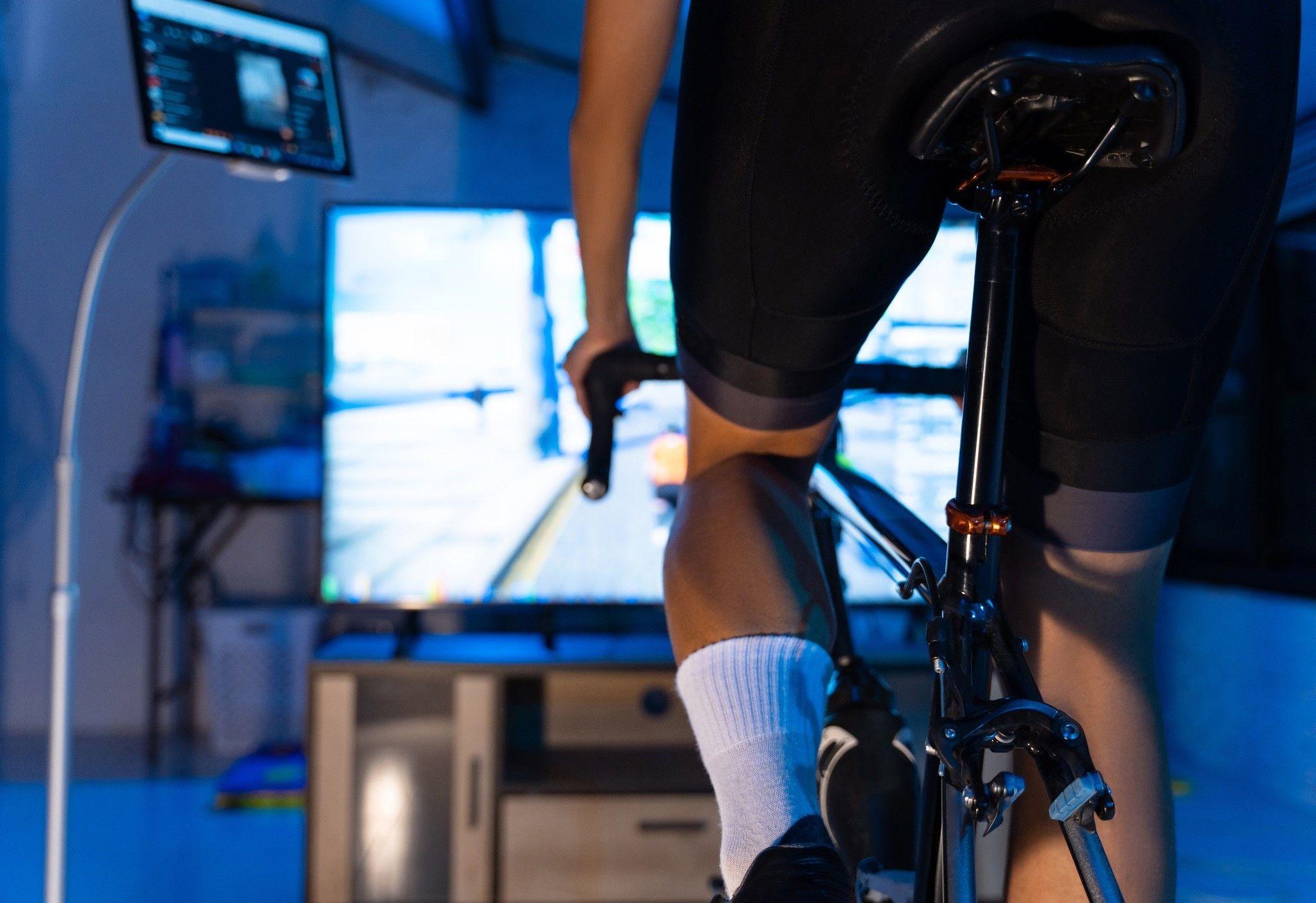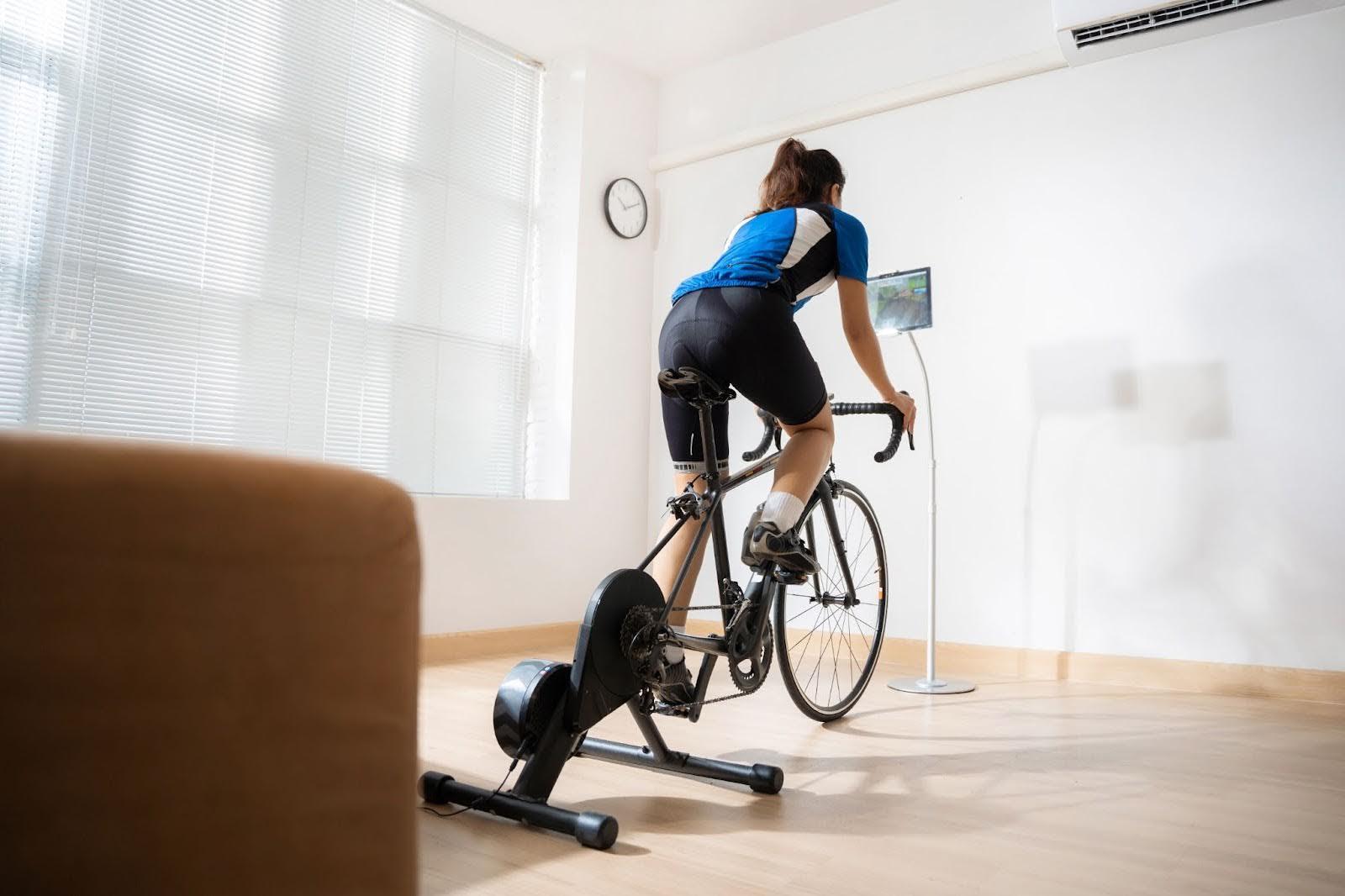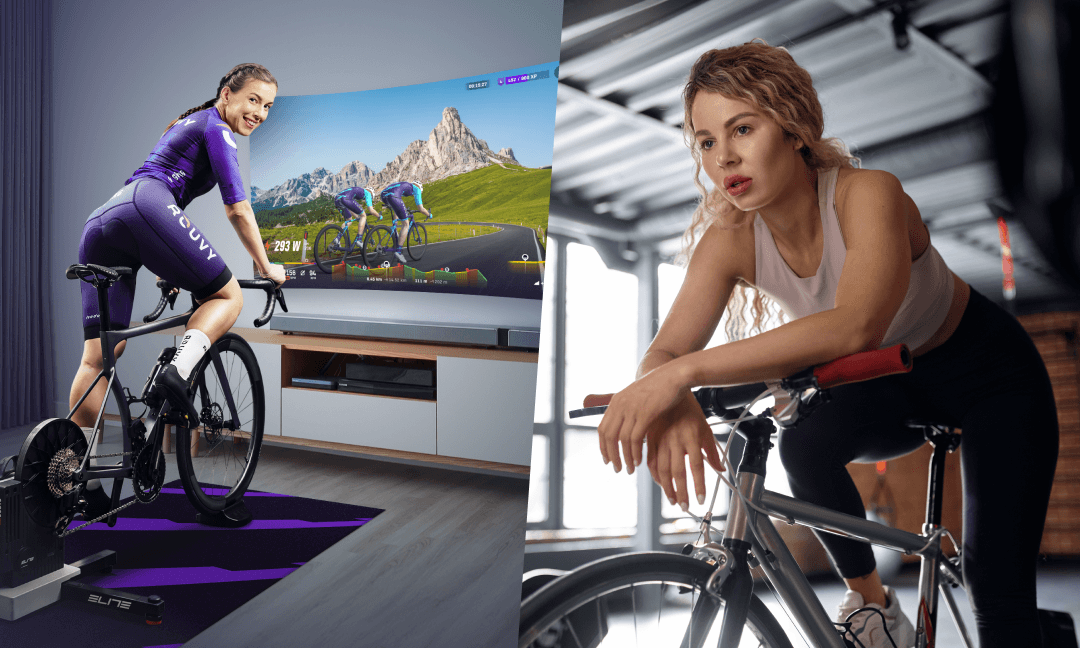When it comes to bike performance, nothing makes a greater difference than understanding and selecting the right gears. Whether you're climbing alpine switchbacks on a road bike, adventuring with your gravel bike off the beaten track, or riding simulated climbs on ROUVY, understanding how your gears work, how to choose them, and how to use them can make a significant difference to your comfort, cadence, and overall efficiency.

Gears convert your pedalling into forward motion, and the correct gear setup allows you to pedal at a comfortable speed regardless of the terrain. This comprehensive gear guide will help you choose gears tailored to your riding style, break down gear ratios, and make derailleur systems easier to understand. It will also explain how indoor platforms like ROUVY make it easier than ever to fine-tune your setup.
Why Gearing Matters in Cycling
Gearing is central to your riding experience. Using the wrong gear on a climb (not using the largest sprockets) will quickly exhaust your legs; going too easy on the flats will cause you to spin uncontrollably without making any progress. The best gears are the ones that match your terrain and fitness level, so you don't overstrain your muscles and keep fatigue at bay. Whether you ride a gravel bike on your local trails or tackle the climbs in the Alps, knowing your gear range, combinations, and gear ratios will help you avoid the most common gearing mistakes.
Additionally, with more people training indoors than ever, it's essential to have a bike gearing setup that seamlessly transitions between the real and virtual worlds. Gearing for indoor cycling needs to be as responsive and realistic as what you use outdoors. That's where ROUVY comes in.
How ROUVY Helps You Train with Smarter Gear Choices
ROUVY's indoor cycling platform uses videos with real-world GPS data to simulate real elevation changes and terrain. You'll feel the gradients just like you would outdoors, and your gear choices matter even more. Many ROUVY routes feature real-world double-digit gradients and undulating profiles that mimic the challenges of real road and gravel rides you'd encounter outside. By choosing the right gears – whether it's changing your cassette or programming gears on a smart bike – you can have smooth gear changes and maintain your rhythm across varied terrain.
Smart bikes, such as the Wahoo Kickr Bike and Tacx Neo Bike, for example, allow you to program your gears virtually, providing a broad and flexible range of gear choices for various routes. ROUVY's ride screen also provides cadence and performance feedback, allowing you to try out gear changes and see how gear ratios impact your effort and speed.
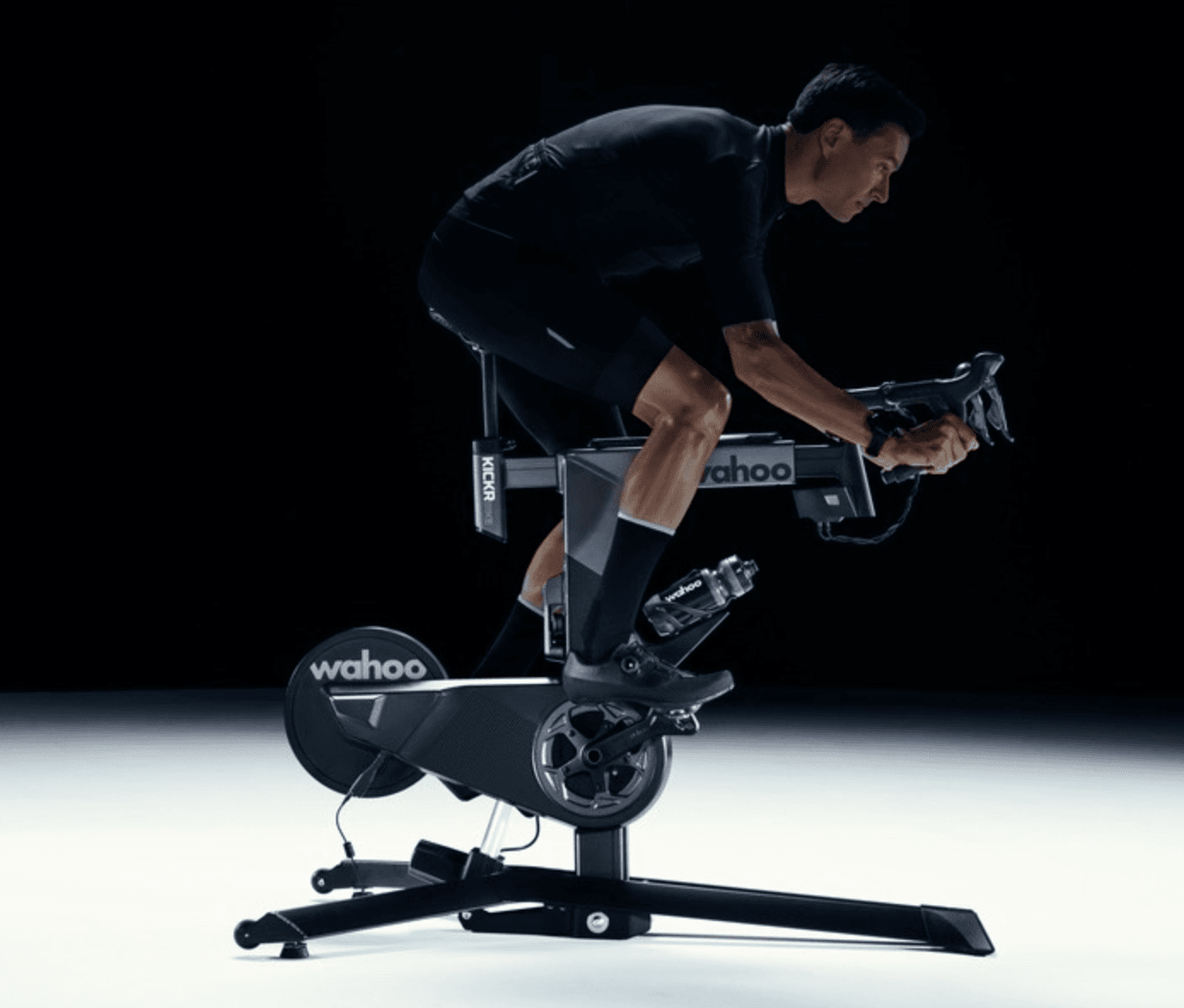
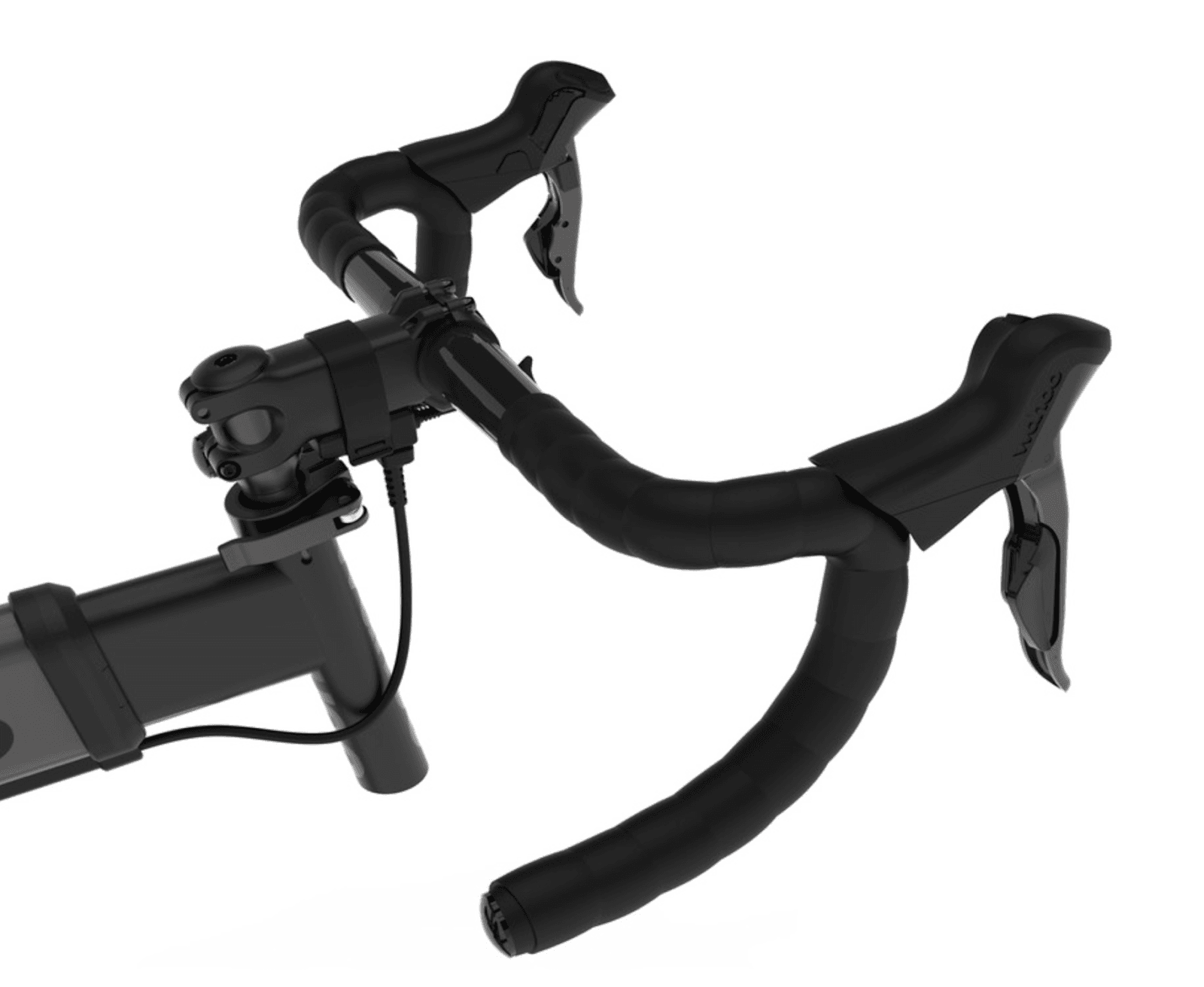
How Bike Gears Work - Road bike gears explained.
Bicycle gears are mechanical systems that allow you to adjust the force applied to the pedals while riding. By shifting gears, you control how much power goes to the back wheel. Most bikes today have multiple gears, consisting of front chainrings, rear cogs (or sprockets), and derailleurs that guide the chain between them.
Changing gears allows you to adjust your pedalling speed and effort. To climb steep hills, you change to a lower gear to make pedalling easier. On flats or descents, a higher gear on the rear hub allows you to go faster with more force, utilising the smallest rear sprockets and the smallest number of teeth. The drivetrain components, including front and rear derailleurs, chainrings, and cassettes, all work together to provide you with a wide range of gear combinations, a broad gear range, and precise control.
Bicycle Gear Ratios: Basics You Should Know
Gear ratio refers to the relationship between the number of teeth on your front chainring and the rear cog or rear cassette. For example, a 50-tooth front ring and a 25-tooth rear cog give you a 2:1 ratio. This ratio means the rear wheel rotates twice for every full pedal stroke.
A ratio of 1:1 or lower for climbing, a ratio of 3:1 or above for speed. Gear ratios help you dial in your drivetrain for your discipline: road, gravel or indoor.
Types of Drivetrains (1x vs. 2x vs. Electronic Shifting)
Modern bikes typically use either a 1x or 2x drivetrain. A 1x system has one chainring at the front and multiple sprockets or a wide-range cassette at the rear wheel. It's simpler, lighter, and common on gravel bikes and mountain bikes. A 2x setup features two chainrings in front, providing more range and smaller jumps between gears, which is popular among roadies and gravel riders.
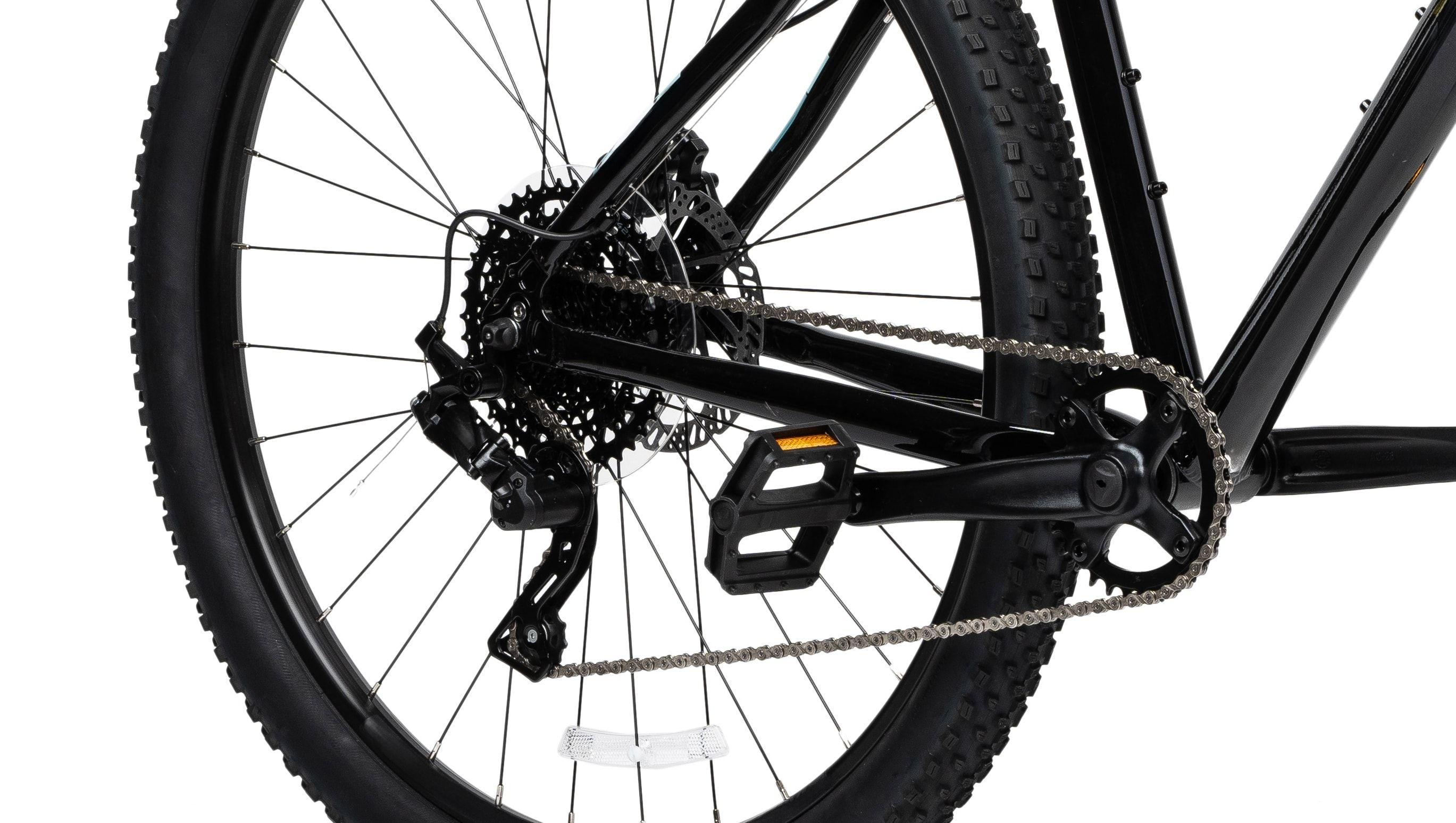
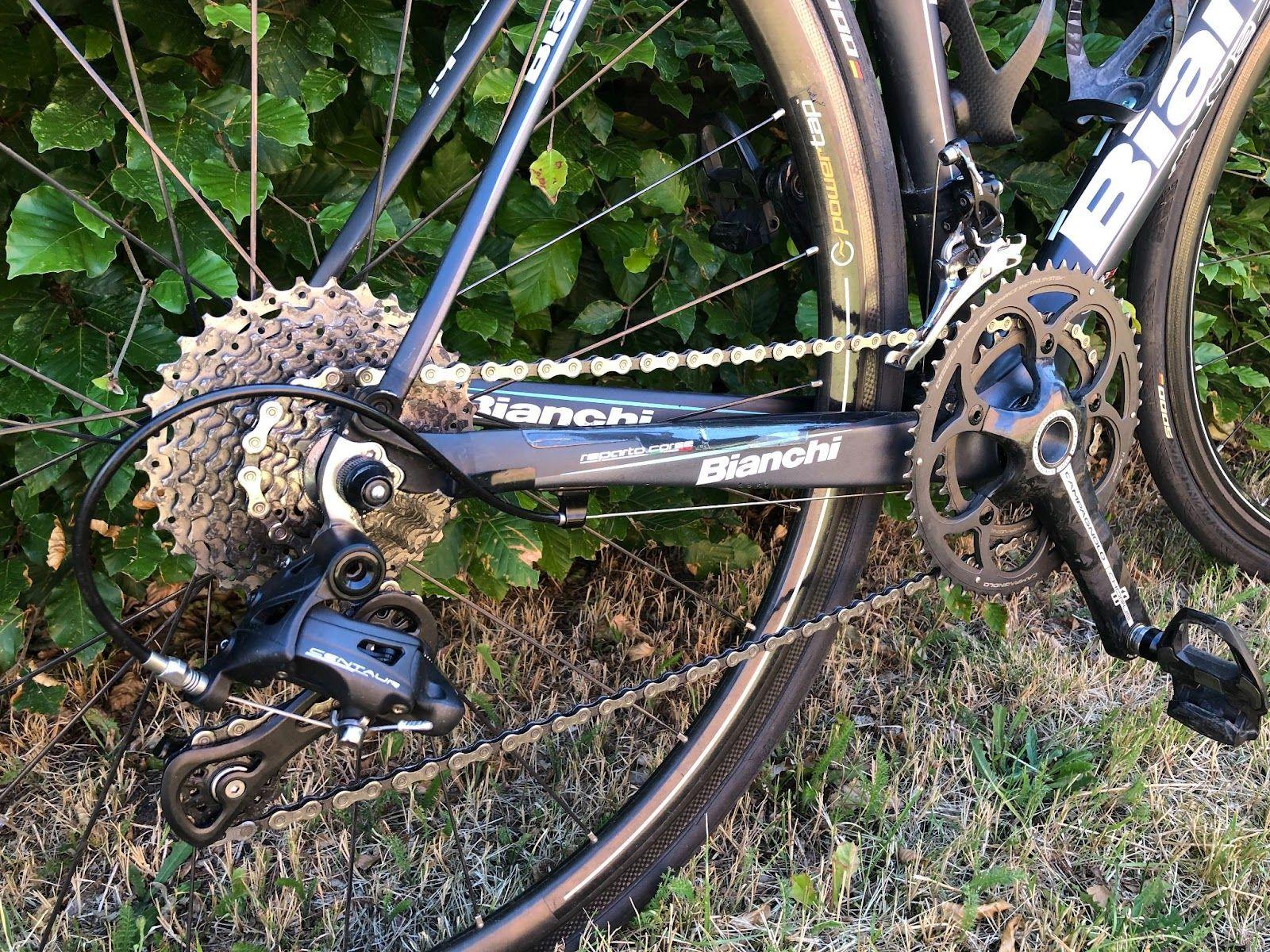
Electronic shifting systems, such as Shimano Di2, SRAM eTap, and Campagnolo EPS, replace traditional metal cables with electronic signals, enabling faster and more precise gear changes.
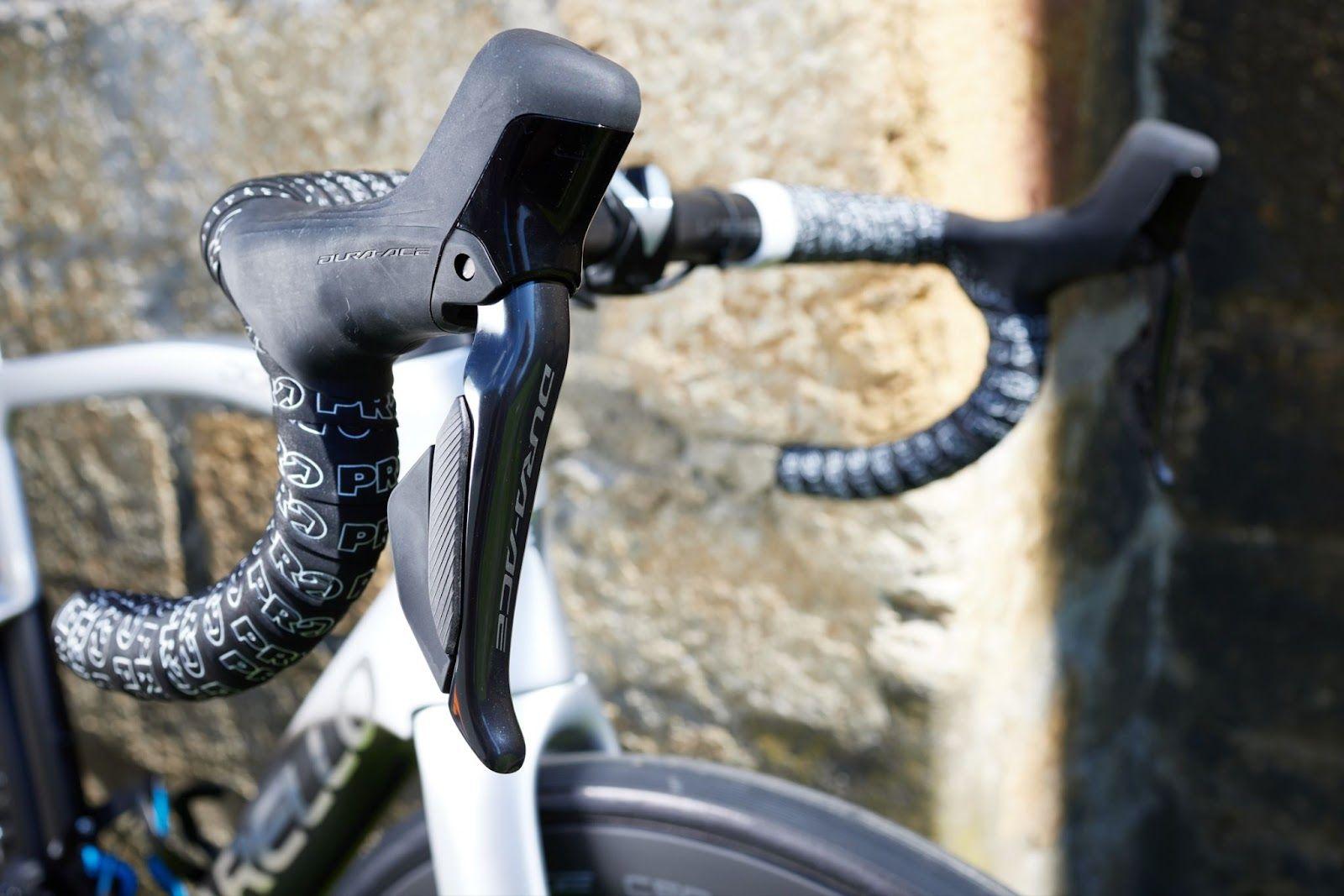
What Is a Triple Chainring?
A 'triple' setup features three chainrings in front, providing a wide gear range that is ideal for beginners, touring cyclists, or those tackling steep climbs with heavy loads. While heavier and less common on modern road bikes, it provides very low gearing options for more effortless pedalling in challenging terrain.
Best Front and Rear Derailleur gears for road bikes
Shimano: Dura-Ace Di2 offers race-level performance, while Ultegra Di2 provides excellent value and nearly identical function.
SRAM: Red eTap AXS is the pinnacle of wireless electronic shifting. SRAM Force eTap AXS gives excellent performance at a mid-tier price.
Campagnolo: Super Record Wireless offers precise, elegant performance at the highest level on road bikes. Chorus is a lighter 12-speed mechanical option.
Budget-friendly choice:
For performance-focused riders on a tighter budget, the third-tier groupsets provide excellent function and reliability:
Shimano 105 R7100 (12-speed mechanical or Di2): Delivers crisp shifting and high-end trickle-down tech at a reasonable price.
SRAM Rival eTap AXS: Wireless 12-speed shifting with wide-range gearing at a much lower cost than Force or Red.
Campagnolo Centaur (11-speed): Offers the elegance of Campy shifting in an affordable mechanical package for classic road builds.
Recommended Cassette Brands
Shimano cassettes (like the 11-34 HG800) are durable and shift smoothly, making them ideal for road and indoor training setups. SRAM cassettes offer broader ranges, such as the XG-1275 Eagle 10-50, which is designed for gravel bikes. Campagnolo cassettes (Chorus and Centaur) are consistent in shifting and performance in 11—and 12-speed.
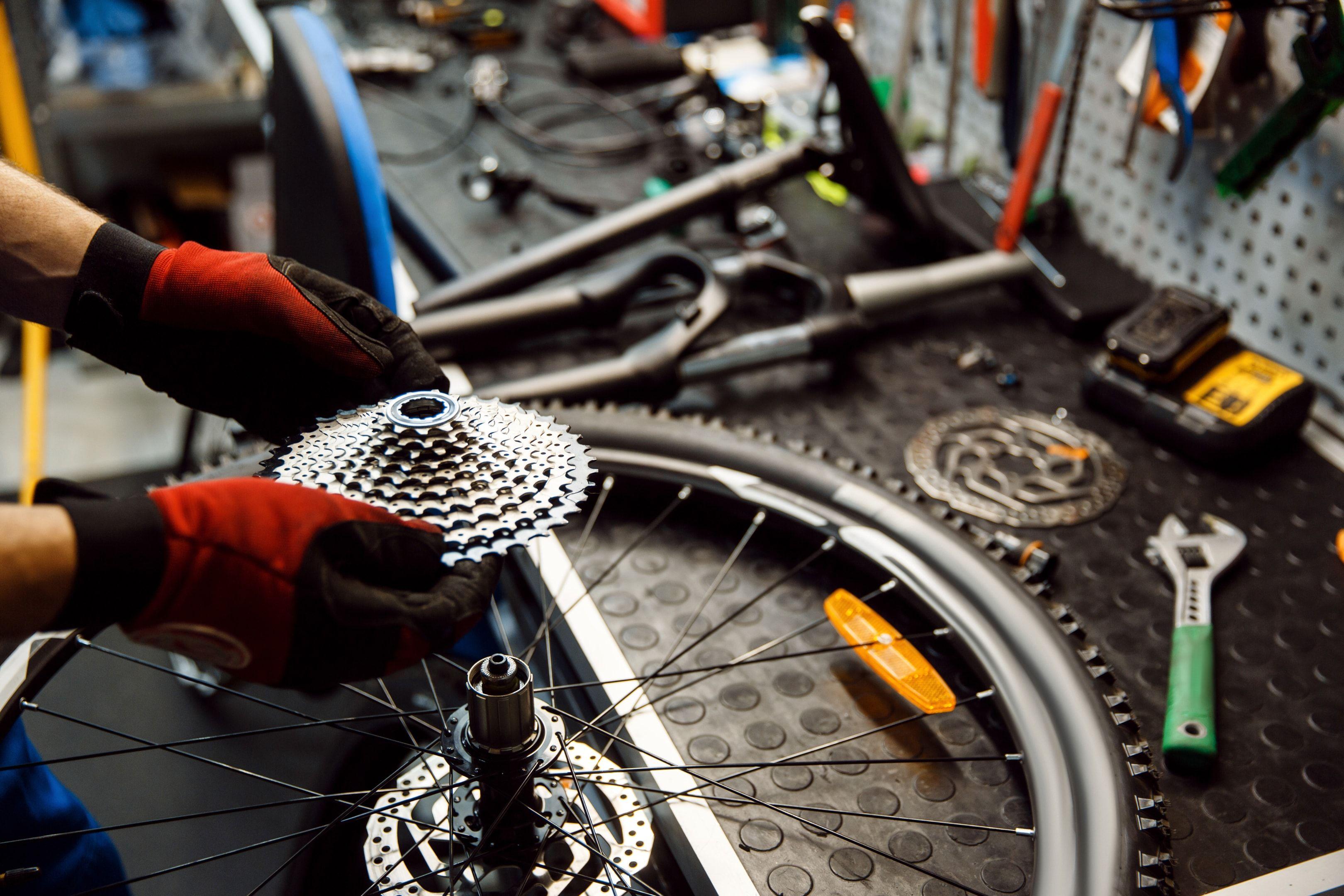
Innovations in Electronic Shifting
2025 has seen further refinement of wireless and semi-wireless shifting. Shimano's Di2 system now includes automatic trim, making it more customisable and intuitive with shift mappings. SRAM's AXS app allows real-time fine-tuning and firmware updates, while Campagnolo's new Wireless EPS has improved battery integration and ergonomics.
All three brands continue to integrate smoother shifting under load, better battery life, and lighter component designs, enhancing your outdoor riding experience.
Classified Powershift Hub: For those seeking simplicity in a 1x setup with the range of a 2x drivetrain, Classified's Powershift hub offers an innovative gear development solution backed by Tom Boonen; however, it comes at a high price. Integrated into the rear hub, this wireless internal gear hub system enables instant virtual front shifting without the need for a front derailleur.
This solution provides the benefits of a wide gear range and faster shifting under load, making it perfect for both road and gravel bikes. The system is also compatible with various drivetrains. A few professional teams utilised this system in Paris-Roubaix to prevent the chain from jumping off the front chainrings on the cobbles.
How ROUVY Helps You Train With the Right Gears
ROUVY's routes offer realistic gradients, requiring you to shift gears efficiently. You'll quickly notice the importance of staying in the right gear to maintain your cadence and power output. ROUVY also solves the problem of 'not enough gears on my trainer bike' with Virtual Gearing, utilising virtual shifting and a Click system, providing even more gear choices should your current trainer setup not allow sufficient gearing. Your gearing will also have representation on the ROUVY ride screen for easy reference while riding. Refer to the support pages to see which trainers are compatible with the Click and Cog.
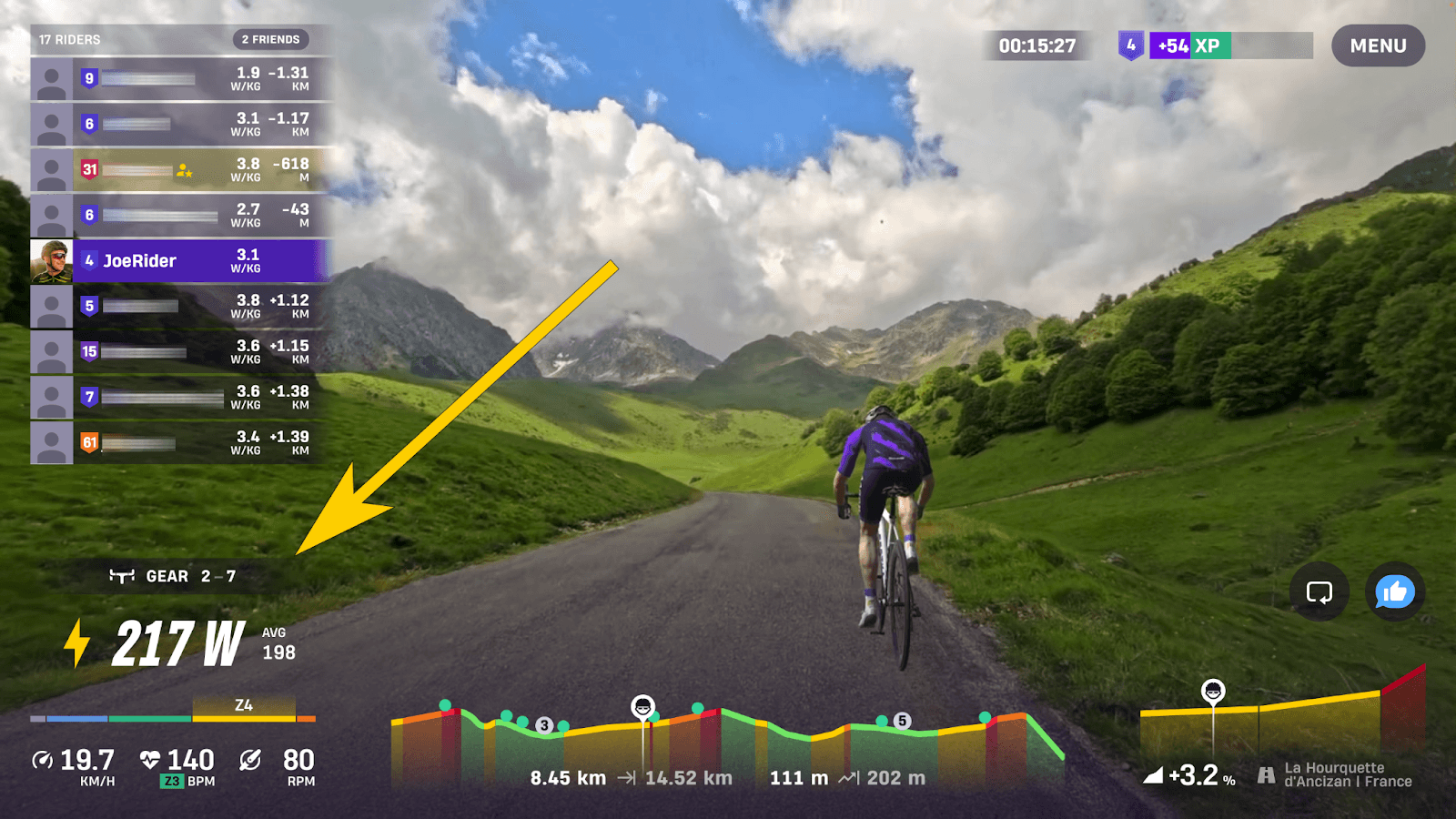
ROUVY's customisable UI metrics allow you to track cadence, heart rate, and wattage to evaluate how well your gears support your goals. For example, if your cadence drops during climbs, you may need to use a lower gear. If you're spinning out on descents, consider a higher top gear. The platform helps translate gear theory into practical knowledge.
Wise gear choice = better performance and comfort
Choosing the best gearing is not about having the most expensive drivetrain but rather selecting the setup that matches your needs. Whether you're riding up steep hills outdoors or tackling virtual climbs on ROUVY, the right gears help you maintain an efficient and comfortable pedalling speed, putting less wear and tear on your joints.
Understanding gear ratios, how to shift gears efficiently, and when to upgrade your drivetrain can improve your cycling experience. As you progress, pay attention to your cadence, comfort, and how well your current setup supports your riding goals. The more familiar you become with how gears work, the more intuitive your gear changes will feel.
From casual indoor training to long road rides and gravel adventures, gear choices should empower you to ride smarter, not harder. Let ROUVY be your training partner in this journey, helping you make informed decisions and track real-time improvements.
Ultimately, wise gear choices lead to better results and more enjoyable rides.
